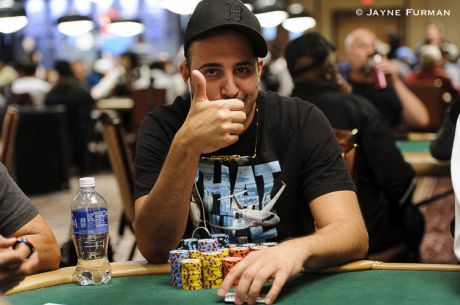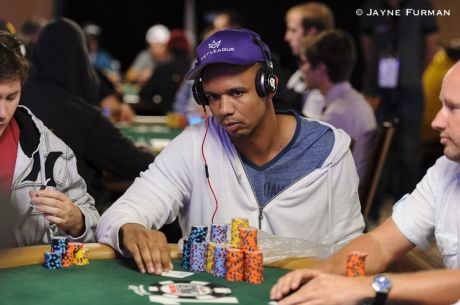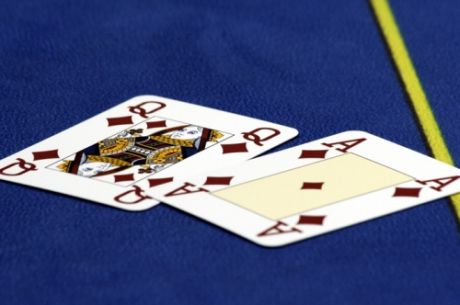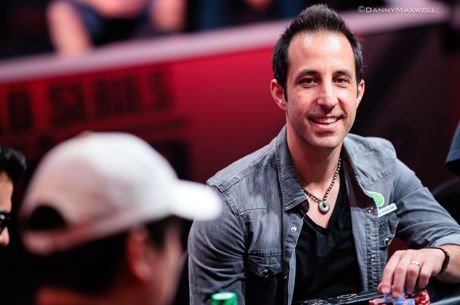Overplaying Big Slick When Deep-Stacked in Tournaments


While helping cover the 2014 World Series of Poker last summer for PokerNews, I noticed a trend in the way many tournament players play AxKx or “Big Slick.” Time and time again, I would see players putting in all of their chips with this hand preflop, including many times when doing so wasn’t necessary.
Sometimes going all in with AxKx is certainly warranted, especially when the stacks are shallow. But putting in upwards of 40-50 big blinds (or more) before the flop with the hand is problematic. This article is going to discuss some of the reasons why you might want to reevaluate how to play Big Slick in tournaments.
Tournaments Are Not Cash Games
In a cash game, it’s easy to make an argument for putting a substantial amount of money in preflop with AxKx. In a tournament, however, your success is predicated on your survival. This means taking a more conservative approach at times than you would in a cash game, including with Big Slick.
I’m not saying not to play AxKx aggressively. It’s a big starting hand and warrants taking an appropriate line. If the stack sizes are less than 20 big blinds, then you are usually happy (and correct) in wanting to get all of your chips in preflop with the hand. However, we can’t say the same is true all of the time when discussing deeper-stacked play.
A typical hand I would witness last summer would go something like the following:
Two players would have stacks of more than 50 big blinds. Player A raises for 2-2.5x the big blind. Player B reraises with AxKx to about 5-7 big blinds. Player A would four-bet to 12-15 big blinds. Player B would then either put in a five-bet large enough to commit himself to the hand or move all in.
The three-bet here with AxKx is fine. It starts to get sticky after that, however.
One of the benefits of playing AxKx is that you generally have two ways to win. One comes from the fold equity you earn by putting in a raise preflop. The second way to win is by seeing all five cards — and make no mistake about it, AxKx wants to see all five cards — and winning the hand at showdown.
The problem in the above example is that one of those ways to win the hand is removed. By the time he makes his big five-bet, Player B has little to no fold equity left as Player A has already indicated he is willing to put his stack into the middle. Granted, there will be times when Player A is making a move and will fold after having made the four-bet, but those situations are few and far between.
In most of these cases when I’d see players committing bigger stacks than necessary before the flop with AxKx, the outcome was not good for them. Every once in a while they would run into a hand like AxQx, but the majority of the time they were up against AxAx or KxKx or racing against a lower pocket pair. Is this really a situation in which you want to risk elimination, especially during the early or middle stages of a tournament when the stacks are deep enough to avoid doing so?
“Ace-King” Doesn’t Always Equal “All In”
I mentioned earlier how there were two ways to win with AxKx. By taking a more conservative preflop approach with a deep stack when dealt Big Slick, you can keep both of these ways to win open to you while also keeping yourself in the game if the situation warrants folding.
Let’s look again at our previous example, except this time let’s have our player dealt AxKx take a different line.
Again, say Player A raises for 2-2.5x the big blind, Player B reraises with AxKx to 5-7 big blinds, then Player A four-bets to 12-15 big blinds. This time, say Player B calls. Both players have approximately 40 big blinds behind.
The flop comes 8x5x2x and Player A leads out. Player B folds and lives to play another day as Player A turns over JxJx and scoops the pot. Or say the flop comes Kx7x3x and Player B ends up doubling up after Player A can’t bring himself to let go of QxQx.
As with most things in poker, how you play these hands should depend on who your opponent is and how he has been playing. If Player A has been reraising light, then putting all your chips in with AxKx could be the right move. If that’s not the case, though, it might be time to put on your thinking cap and see if there is a better way of playing the hand that won’t have you risking all your chips.
If Ivey Can Do It...
You could even argue (and rightfully so) that there is a case for folding AxKx before the flop to the 12-15 big blind four-bet. Such was revealed during the coverage of The $1,000,000 Big One for One Drop on ESPN when Phil Ivey did just that in a hand against Doc Sands.
It was early on Day 2, and as reported on PokerNews the hand came during Level 10 when the blinds were 25,000/50,000 with a 5,000 ante. Sands opened from under the gun for 115,000 (a little over 2x), then after it folded around to Ivey in the small blind he reraised to 340,000 (almost 7 big blinds). Sands then reraised again to 820,000 (over 16 big blinds), and after thinking just a short while Ivey folded.
We found out on ESPN that Ivey had let go of A♦K♣ — good for him, as Sands had A♠A♥. “One of the few in the game not addicted to ace-king preflop... he folded!” said Lon McEachern when announcing the hand on ESPN.
With more than 7.3 million behind when folding (over 145 big blinds), Ivey certainly could have called the four-bet to see a flop. But being so deep and out of position with Big Slick, he preferred not to enter into a potentially unfavorable situation unnecessarily.
The next time you’ve been sitting in a tournament patiently waiting for a hand and finally get one with Big Slick, make sure to take your time and think through the situation before putting all of your chips in the middle. Your bankroll will be happy you did.
Get all the latest PokerNews updates on your social media outlets. Follow us on Twitter and find us on both Facebook and Google+!








